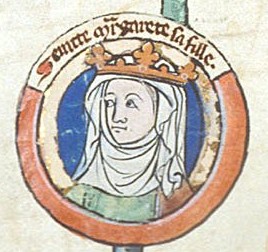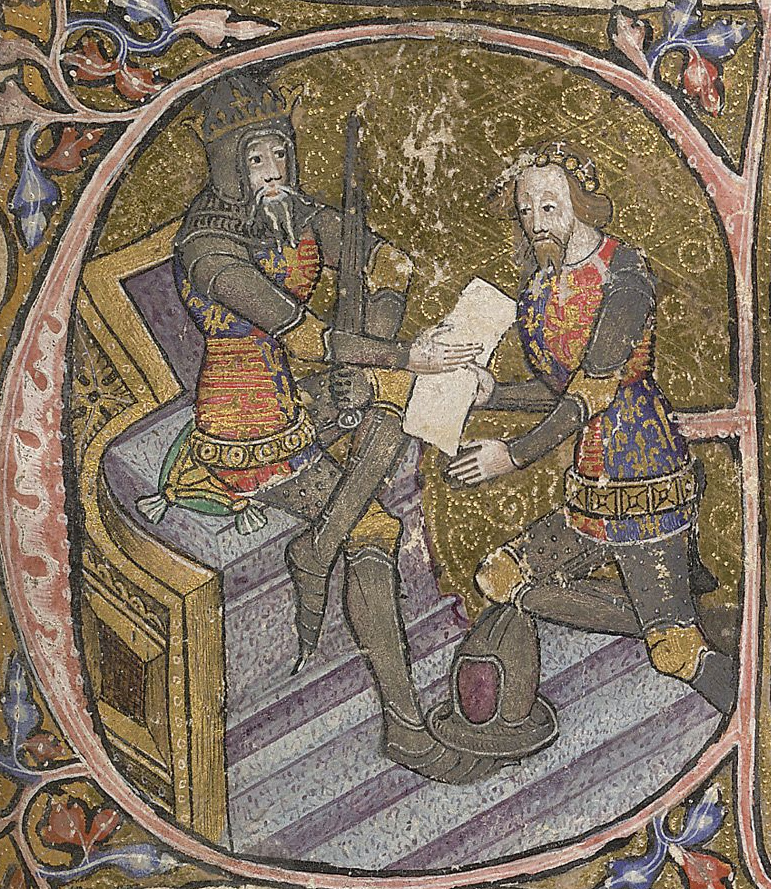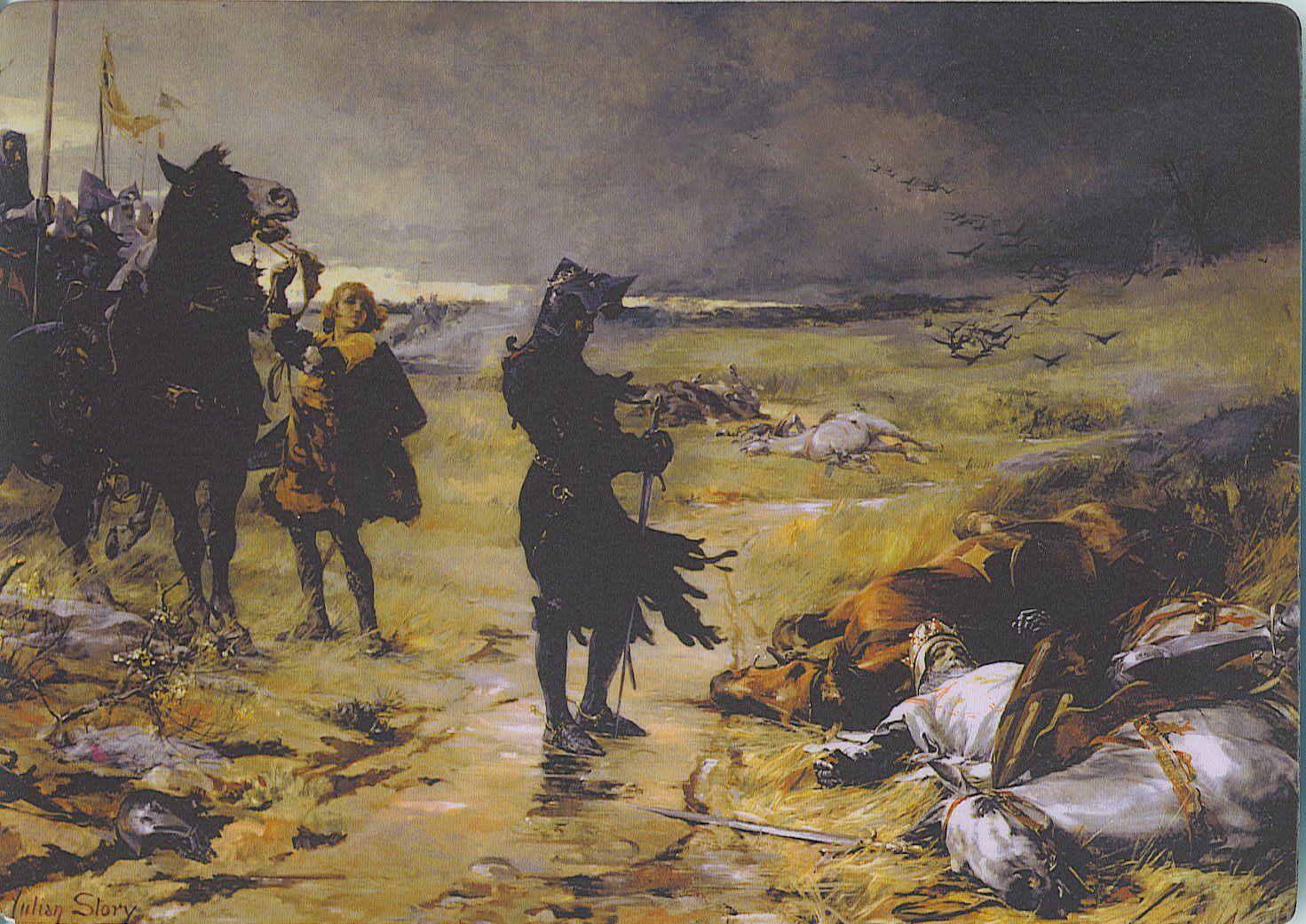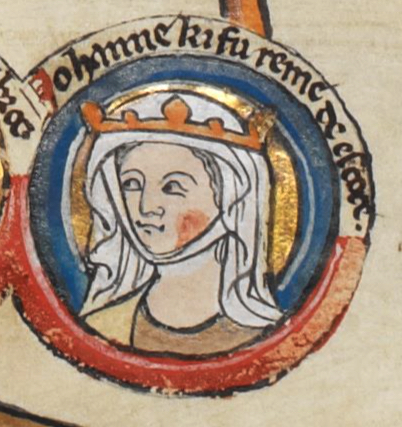|
Joan Beaufort, Queen Of Scots
Joan Beaufort ( 1404 – 15 July 1445) was Queen of Scots from 1424 to 1437 as the spouse of King James I. During part of the minority of her son James II (from 1437 to 1439), she served as the regent of Scotland, the first dowager Queen of Scotland to do so since the 13th century. Background and early life Joan Beaufort was a daughter of John Beaufort, 1st Earl of Somerset, a legitimised son of John of Gaunt by his mistress (and later third wife) Katherine Swynford. She was born in 1404. Joan's mother was Margaret Holland, the granddaughter of Joan of Kent (wife of Edward the Black Prince) from her earlier marriage to Thomas Holland, 1st Earl of Kent. Joan was also a half-niece of King Henry IV of England, first cousin once removed of Richard II, and great-granddaughter of Edward III. Her uncle, Henry Beaufort, was a cardinal and Chancellor of England. King James I of Scotland met Joan during his time as a prisoner in England, and knew her from at least 1420. She is s ... [...More Info...] [...Related Items...] OR: [Wikipedia] [Google] [Baidu] |
Queen Consort Of Scots
The consorts of the monarchs of Scotland, such as queen consort, queens consort, princess consort, princesses consort, and prince consort, kings consort, bore titles derived from their marriage. The Kingdom of Scotland was first unified as a Sovereign state, state by Kenneth I of Scotland in 843, and ceased to exist as an independent kingdom after Act of Union 1707, the Act of Union 1707 when it was merged with the Kingdom of England to become the Kingdom of Great Britain. The early history of Scotland is confused and often obscure, due largely to information given by the sources of the time and after, which are often contradictory, vague, and lacking in detail. Details of the kings prior to Malcolm III are sparse, and the status of two – Giric of Scotland, Giric and Eochaid of Scotland, Eochaid – dubious; details of their wives are almost non-existent. Thus, it is practically impossible to construct a list of consorts of Scotland prior to the accession of Macbeth of Scotlan ... [...More Info...] [...Related Items...] OR: [Wikipedia] [Google] [Baidu] |
Andrew Stewart (d
Andrew Stewart may refer to: Law and politics * Andrew Stewart (American politician, died 1872) (1791–1872), U.S. Representative from Pennsylvania * Andrew Stewart (American politician, died 1903) (1836–1903), U.S. Representative from Pennsylvania * Charles Stewart (diplomat) (Andrew Charles Stewart, 1907–1979), British diplomat * Andrew Stewart, Lord Ericht (born 1963), Scottish judge, Senator of the College of Justice Nobility * Andrew Stewart, 1st Lord Avandale ( 1420–1488), Lord Chancellor of Scotland * Andrew Stewart, 2nd Lord Avondale ( 1505–1549), Scottish peer * Andrew Stewart, 1st Lord Avondale (second creation) (died 1513), Scottish nobleman * Andrew Stewart, 2nd Lord Ochiltree ( 1521–1591) Religion * Andrew Stewart (bishop of Moray) (1442–1501), Scottish prelate and administrator * Andrew Stewart (bishop of Caithness, died 1517), Bishop of Caithness and Treasurer of Scotland * Andrew Stewart (bishop of Caithness, died 1541) ( 1490–1541), Scotti ... [...More Info...] [...Related Items...] OR: [Wikipedia] [Google] [Baidu] |
Richard II
Richard II (6 January 1367 – ), also known as Richard of Bordeaux, was King of England from 1377 until he was deposed in 1399. He was the son of Edward, Prince of Wales (later known as the Black Prince), and Joan, Countess of Kent. Richard's father died in 1376, leaving Richard as heir apparent to his grandfather, King Edward III; upon the latter's death, the 10-year-old Richard succeeded to the throne. During Richard's first years as king, government was in the hands of a series of regency councils, influenced by Richard's uncles John of Gaunt and Thomas of Woodstock. England at that time faced various problems, most notably the Hundred Years' War. A major challenge of the reign was the Peasants' Revolt in 1381, and the young king played a central part in the successful suppression of this crisis. Less warlike than either his father or grandfather, he sought to bring an end to the Hundred Years' War. A firm believer in the royal prerogative, Richard restrained th ... [...More Info...] [...Related Items...] OR: [Wikipedia] [Google] [Baidu] |
Henry IV Of England
Henry IV ( – 20 March 1413), also known as Henry Bolingbroke, was King of England from 1399 to 1413. Henry was the son of John of Gaunt, Duke of Lancaster (a son of King Edward III), and Blanche of Lancaster. Henry was involved in the 1388 revolt of Lords Appellant against Richard II, his first cousin, but he was not punished. However, he was exiled from court in 1398. After Henry's father died in 1399, Richard blocked Henry's inheritance of his father's lands. That year, Henry rallied a group of supporters, overthrew and imprisoned Richard II, and usurped the throne; these actions later contributed to dynastic disputes in the Wars of the Roses (1455–1487). Henry was the first English ruler whose mother tongue was English (rather than French) since the Norman Conquest, over 300 years earlier. As king, he faced a number of rebellions, most seriously those of Owain Glyndŵr, the last Welshman to claim the title of Prince of Wales, and the English knight Henry Percy (Hotspur) ... [...More Info...] [...Related Items...] OR: [Wikipedia] [Google] [Baidu] |
Thomas Holland, 1st Earl Of Kent
Thomas Holland, 2nd Baron Holand, and ''jure uxoris'' 1st Earl of Kent, Order of the Garter, KG (26 December 1360) was an Kingdom of England, English nobleman and military commander during the Hundred Years' War. By the time of the Crécy campaign, he had apparently lost one of his eyes. Early life He was from a gentry family in Upholland, Lancashire. Thomas was a son of Robert de Holland, 1st Baron Holand and Maud la Zouche. One of his brothers was Otho Holand, who was also made a Knight of the Garter. Military career In his early military career, he fought in Flanders. He was engaged, in 1340, in the English expedition into Flanders and sent, two years later, with Sir John D'Artevelle to Bayonne, to defend the Gascony, Gascon frontier against the French. In 1343, he was again on service in Kingdom of France, France. In 1346, he attended King Edward III into Normandy in the immediate retinue of the Thomas de Beauchamp, 11th Earl of Warwick, Earl of Warwick; and, at the taki ... [...More Info...] [...Related Items...] OR: [Wikipedia] [Google] [Baidu] |
Edward The Black Prince
Edward of Woodstock (15 June 1330 – 8 June 1376), known as the Black Prince, was the eldest son and heir apparent of King Edward III of England. He died before his father and so his son, Richard II, succeeded to the throne instead. Edward nevertheless earned distinction as one of the most successful English commanders during the Hundred Years' War, being regarded by his English contemporaries as a model of chivalry and one of the greatest knights of his age. Edward was made Duke of Cornwall, the first English dukedom, in 1337. He was guardian of the kingdom in his father's absence in 1338, 1340, and 1342. He was created Prince of Wales in 1343 and knighted by his father at La Hougue in 1346. In 1346, Prince Edward commanded the vanguard at the Battle of Crécy, his father intentionally leaving him to win the battle. He took part in Edward III's 1349 Calais expedition. In 1355, he was appointed the king's lieutenant in Gascony and ordered to lead an army into Aquitaine on ... [...More Info...] [...Related Items...] OR: [Wikipedia] [Google] [Baidu] |
Joan Of Kent
Joan, Countess of Kent suo jure ( – August 1385),Barber, R. (2004, 23 September). Joan, suo jure countess of Kent, and princess of Wales and of Aquitaine [called the Fair Maid of Kent] (c. 1328–1385). ''Oxford Dictionary of National Biography.'' Retrieved 2 April 2025, fro known as the Fair Maid of Kent, although this appellation does not appear to be contemporary. Joan of Kent was the first Princess of Wales and mother of King Richard II of England, her son by her third husband, Edward the Black Prince. Also known as Edward of Woodstock, the Black Prince was the son and heir apparent of Edward III of England, King Edward III by his wife Philippa of Hainault. The French chronicler Jean Froissart described her as 'in her time the most beautiful woman in all the realm of England, and the most loved', and, Chandos Herald wrote that she was 'beautiful, pleasant and wise. After the death of her brother John, 3rd Earl of Kent, in 1352, Joan inherited the titles 4th Countess of K ... [...More Info...] [...Related Items...] OR: [Wikipedia] [Google] [Baidu] |
Margaret Holland
Margaret Holland (1385 – 30 December 1439) was a medieval English noblewoman and a member of the powerful Holland family. Through her marriages she became Countess of Somerset and Duchess of Clarence. She was "at the very centre of royal power and prestige" throughout her lifetime. Early life Margaret was a daughter of Thomas Holland, 2nd Earl of Kent, who was the son of Joan "the Fair Maid of Kent" (granddaughter of Edward I of England, wife of Edward the Black Prince and mother of Richard II of England). Margaret's mother was Alice FitzAlan, daughter of Richard FitzAlan, 10th Earl of Arundel and Eleanor of Lancaster. Marriages and issue Margaret married John Beaufort, 1st Earl of Somerset, son of John of Gaunt and his mistress Katherine Swynford. They had six children: * Henry Beaufort, 2nd Earl of Somerset (1401–1418). * Joan Beaufort (d. 1445), who married James I of Scotland and Sir James Stewart, the Black Knight of Lorn. * John Beaufort, 1st Duke of Some ... [...More Info...] [...Related Items...] OR: [Wikipedia] [Google] [Baidu] |
Katherine Swynford
Katherine Swynford, Duchess of Lancaster (born Katherine de Roet, – 10 May 1403) was the third wife of John of Gaunt, Duke of Lancaster, the fourth (but third surviving) son of King Edward III. Daughter of a knight from County of Hainaut, Hainaut, Katherine, whose name is also spelled 'Katharine' or 'Catherine', was brought up at the English royal court, later found herself in the service of Blanche of Lancaster, the first wife of John of Gaunt. At that time, she was married to Hugh Swynford (or de Swynford), one of the Duke's knights. After the death of the Duchess, Katherine became the lady-in-waiting of her daughters, and also took care of them. After the death of Hugh Swynford, she became a member of the household of the Duke's new wife, Constance of Castile, Duchess of Lancaster, Constance of Castile, and she was given management of the estates of her deceased husband in Lincolnshire: Coleby, North Kesteven, Coleby and Kettlethorpe, Lincolnshire, Kettlethorpe. She soon ... [...More Info...] [...Related Items...] OR: [Wikipedia] [Google] [Baidu] |
John Of Gaunt
John of Gaunt, Duke of Lancaster (6 March 1340 – 3 February 1399), was an English royal prince, military leader and statesman. He was the fourth son (third surviving) of King Edward III of England, and the father of King Henry IV. Because of Gaunt's royal origin, advantageous marriages and some generous land grants, he was one of the richest men of his era and an influential figure during the reigns of both his father and his nephew, Richard II. As Duke of Lancaster, he is the founder of the royal House of Lancaster, whose members would ascend the throne after his death. His birthplace, Ghent in Flanders, then known in English as ''Gaunt'', was the origin of his name. John's early career was spent in France and Spain fighting in the Hundred Years' War. He made an abortive attempt to enforce a claim to the Crown of Castile that came through his second wife, Constance of Castile, and for a time styled himself as King of Castile. When Edward the Black Prince, Gaunt's elde ... [...More Info...] [...Related Items...] OR: [Wikipedia] [Google] [Baidu] |
Regent
In a monarchy, a regent () is a person appointed to govern a state because the actual monarch is a minor, absent, incapacitated or unable to discharge their powers and duties, or the throne is vacant and a new monarch has not yet been determined. The rule of a regent or regents is called a regency. A regent or regency council may be formed ''ad hoc'' or in accordance with a constitutional rule. ''Regent'' is sometimes a formal title granted to a monarch's most trusted advisor or personal assistant. If the regent is holding the position due to their being in the line of succession, the compound term '' prince regent'' is often used; if the regent of a minor is their mother, and she is wife or widow of the king, she would be referred to as ''queen regent''. If the formally appointed regent is unavailable or cannot serve on a temporary basis, a may be appointed to fill the gap. In a monarchy, a regent usually governs due to one of these reasons, but may also be elected to ... [...More Info...] [...Related Items...] OR: [Wikipedia] [Google] [Baidu] |
List Of Scottish Royal Consorts
The consorts of the monarchs of Scotland, such as queens consort, princesses consort, and kings consort, bore titles derived from their marriage. The Kingdom of Scotland was first unified as a state by Kenneth I of Scotland in 843, and ceased to exist as an independent kingdom after the Act of Union 1707 when it was merged with the Kingdom of England to become the Kingdom of Great Britain. The early history of Scotland is confused and often obscure, due largely to information given by the sources of the time and after, which are often contradictory, vague, and lacking in detail. Details of the kings prior to Malcolm III are sparse, and the status of two – Giric and Eochaid – dubious; details of their wives are almost non-existent. Thus, it is practically impossible to construct a list of consorts of Scotland prior to the accession of Macbeth, whose wife Gruoch is well-documented. House of Moray Although a few details of earlier queens consort are known – for example, ... [...More Info...] [...Related Items...] OR: [Wikipedia] [Google] [Baidu] |






